Mount Everest and the surrounding Himalayas have captivated explorers, scientists, and adventurers for centuries. As the highest point on Earth, Mount Everest stands beyond as a formidable natural wonder and a symbol of human aspiration and resilience. Situated within the vast Himalayan range, Everest's story is deeply entwined with the geography, cultures, and challenges of the region.
Mount Everest is the Earth's highest mountain above sea level, located on the border of Nepal and China. In addition to its geographical prominence, the mountain is known for its role in mountaineering history, its surrounding Himalayan range, and its impact on the region's environment and culture.
This article examines the intricate relationship between Mount Everest and its environment, offering a detailed exploration of its neighboring peaks, the Sherpa community, and the evolving challenges facing the world's most famous summit. The world's highest peak and its associated elements, including its geographical context, history, cultural significance, and the challenges of climbing it.
Mt Everest in the Himalayas!!!! Nepal Mount Everest Himalayas
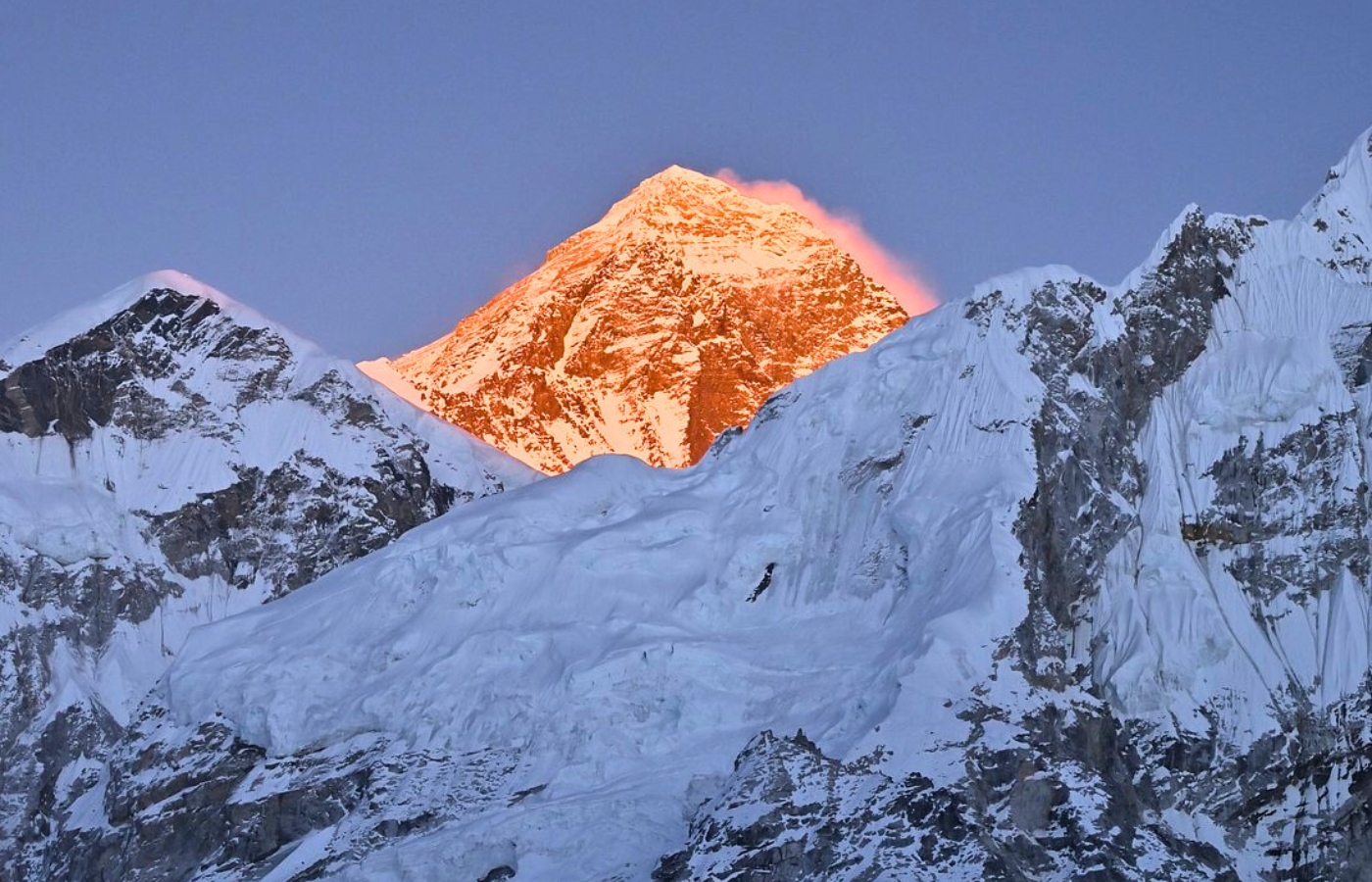
Mount Everest and the Himalayas
Mount Everest, at 8,849 meters (29,032 feet), is the highest mountain in the world and a prominent peak of the Himalayan range. While often confused as being the same, Mount Everest is one summit within the Himalayas, specifically in the Mahalangur Himal sub-range, which also features Lhotse, Cho Oyu, and Makalu.
The Himalayas stretch 2,400 kilometers across Nepal, India, Bhutan, China, and Pakistan, containing over 100 peaks above 7,000 meters. As the tallest peak, Everest remains the crown jewel, symbolizing adventure, human endurance, and global mountaineering ambition.
The Himalayas represent vast cultural diversity, sacred rivers, and unique ecosystems, while Mount Everest embodies the ultimate climbing challenge. Together, they attract climbers, trekkers, and pilgrims from around the world, uniting natural wonder with spiritual significance in South Asia.
Is Mount Everest and Himalaya the same mountain?
Mt Everest & The Himalayas
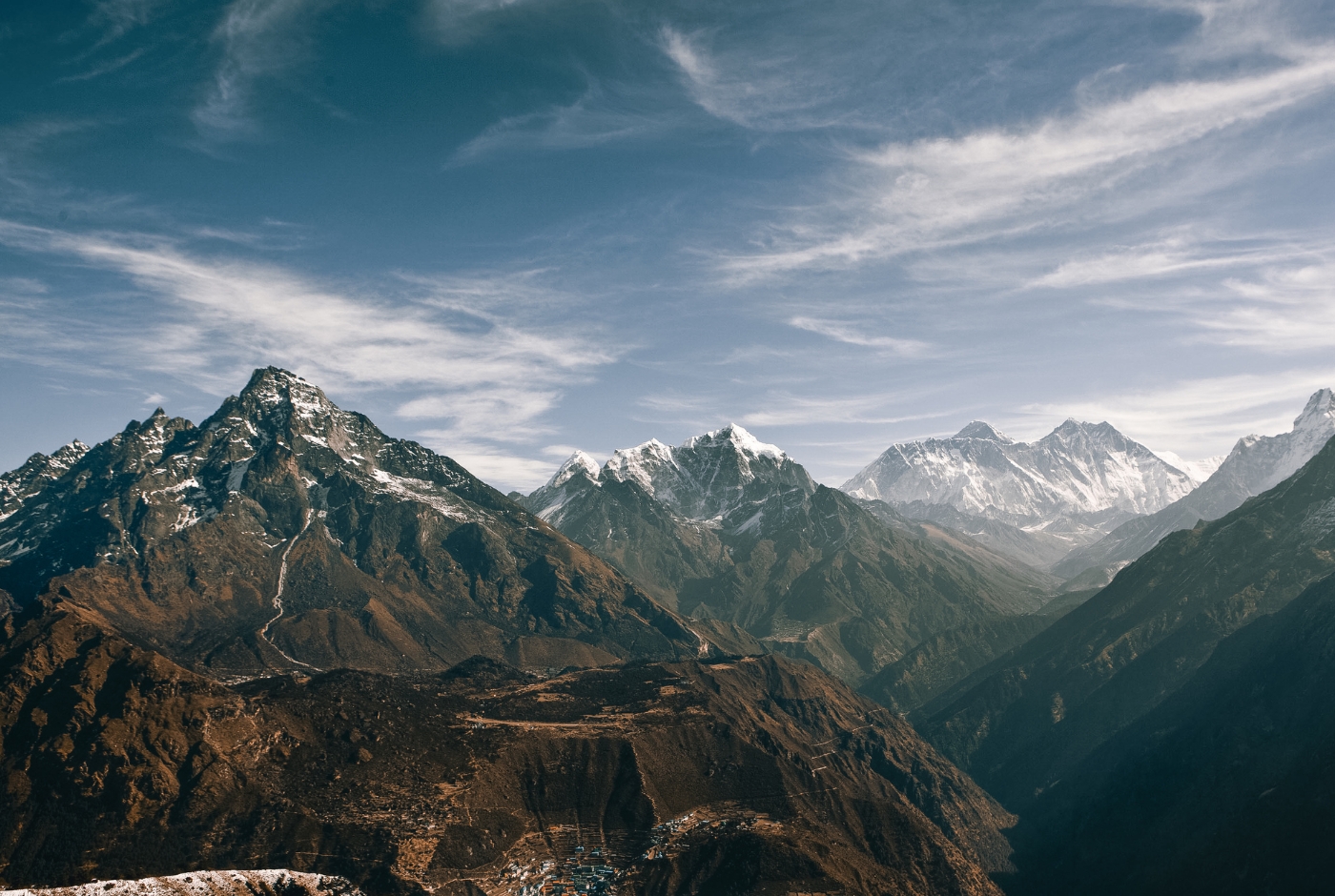
No, Mount Everest and the Himalayas are not the same; Mount Everest is the highest peak within the Himalayan mountain range. The Himalayas are a vast, sprawling mountain system in Asia, containing numerous peaks, of which Mount Everest is just one, albeit the tallest on Earth.
Mount Everest and the Himalaya are closely linked yet fundamentally distinct. Everest is a single mountain — the tallest in the world — while the Himalaya is an immense chain comprising hundreds of peaks, valleys, and ecosystems. Everest is part of the Mahalangur Himal sub-range of the central Himalayas, alongside other giants such as Lhotse, Nuptse, and Makalu.
Understanding the Himalayas
Spanning over 2,400 kilometers (1,500 miles), the Himalayas were formed tens of millions of years ago through the collision of the Indian and Eurasian tectonic plates. Today, they host some of the most extreme environments on Earth and serve as a source of life-giving rivers such as the Ganges, Brahmaputra, and Indus.
Mount Everest and K2
Mount Everest and K2 are the two tallest mountains on Earth, yet they differ significantly in height, accessibility, and risk. Mount Everest, at 8,849 meters (29,032 feet), dominates the Himalayas on the Nepal–Tibet border and is recognized as the highest mountain in the world. K2, the second-highest peak at 8,611 meters (28,251 feet), rises from the Karakoram Range between Pakistan and China.
Everest is comparatively more accessible due to established commercial expeditions, fixed ropes, and helicopter rescue support. K2, however, is infamous as the “Savage Mountain” because of its steep ridges, technical climbing demands, and violent weather, leading to one of the highest fatality rates in mountaineering.
Everest symbolizes global ambition and the ultimate summit challenge, while K2 represents extreme technical difficulty and unforgiving conditions. Together, they define the pinnacle of high-altitude climbing, attracting mountaineers seeking adventure, skill, and resilience at the roof of the world.
Height Comparison: Mount Everest and Mount K2
Everest Mount Everest vs Mount K2 Height

Comparison between Mount Everest and K2 is inevitable in any discussion of the world’s highest mountains.
Height Comparison: Mount Everest and K2: At 8,611 meters (28,251 feet), K2 ranks as the second-highest mountain, trailing Everest by approximately 237 meters. Despite its lower height, K2 is often deemed the more formidable of the two.
Difficulty and Dangers of Climbing: While Mount Everest benefits from relatively established routes and commercial support, K2’s steep faces and unpredictable weather contribute to its reputation as the "Savage Mountain." Statistically, K2 has a significantly higher fatality rate among climbers.
Location and Accessibility: Everest straddles the border between Nepal and the Tibet Autonomous Region of China, whereas K2 lies within the Karakoram Range on the border between Pakistan and China. Everest's accessibility through Nepal’s established trekking infrastructure has made it far more popular with climbers.
Mount Everest vs K2 Comparison
| Factor | Mount Everest | K2 |
| Height | 8,849 m (29,032 ft) tallest mountain in the world. | 8,611 m (28,251 ft) second tallest mountain. |
| Location | Border of Nepal and Tibet (China), part of the Himalayas (Mahalangur sub-range). | Border of Pakistan and China, in the Karakoram Range. |
| Climbing Difficulty | Challenging but supported by fixed routes, commercial expeditions, and Sherpa guides. | Extremely difficult with steep, technical terrain; known as the “Savage Mountain.” |
| Fatality Rate | Around 3–4%. | Much higher, often cited at 20–25%. |
| Weather | Harsh but more predictable; climbing seasons in spring and autumn. | Highly unpredictable, violent storms, and dangerous avalanches. |
| Success Rate | Approximately 65% summit success. | Only around 30% summit success. |
| Climbing Season | April–May (spring) and Sept–Nov (autumn). | Traditionally summer; winter ascents nearly impossible (first winter summit only in 2021). |
| Rescue Options | Helicopter rescue possible, especially on Nepal side. | Very limited; helicopters rarely operate at such altitude. |
| Cost | $35,000 $160,000 depending on expedition. | $20,000 $60,000 but less commercial support. |
Mount Everest and Lhotse
Mount Everest and Lhotse are neighboring giants in the Mahalangur Himal sub-range of the Himalayas, sharing routes and history yet offering different climbing challenges. Mount Everest, at 8,849 meters (29,032 feet), is the highest mountain in the world, while Lhotse, at 8,516 meters (27,940 feet), is the fourth-highest mountain on Earth. The two peaks are connected by the South Col, and climbers heading for both mountains follow the same path until Camp III on the Lhotse Face.
Everest Mount Everest vs Mount Lhotse

Everest is defined by its infamous Khumbu Icefall, long summit routes, and the extreme conditions of the “death zone.” Lhotse, in contrast, is regarded as more technical, with its steep summit pyramid and exposed sections demanding advanced rock and ice climbing skills. The Lhotse Face, a near-vertical wall of ice and rock, remains one of the most difficult sections of the Himalayas.
While Everest attracts large numbers of climbers and commercial expeditions, Lhotse offers a quieter but equally formidable ascent. Both mountains stand as icons of Himalayan mountaineering, testing endurance, skill, and courage, and each commands profound respect in the world of high-altitude climbing.
Geographical Proximity and Physical Connection
The connection between Mount Everest and Lhotse is uniquely close. They are separated by a sharp, glacial saddle known as the South Col, located at an altitude of approximately 7,906 meters (25,938 feet). This narrow depression acts as a natural gateway between the two summits.
For climbers ascending Everest via the Southeast Ridge, the route passes near the South Col before making the final push to the summit. From this point, the south face of Lhotse looms dramatically, its steep, icy walls rising within a few hundred meters. The geographical proximity is so close that, from certain vantage points, Everest and Lhotse appear almost as one massive, interconnected formation, though each peak maintains its distinct character and elevation.
Climbing Challenges Between Everest and Lhotse
Although closely linked, the two mountains present distinct challenges. While Everest’s routes are longer and involve navigating complex icefalls, Lhotse’s summit pyramid demands technical rock climbing skills, posing an entirely different set of risks to mountaineers.
Everest vs Lhotse Comparison Table
| Factor | Mount Everest | Mount Lhotse |
| Height | 8,849 m (29,032 ft) highest mountain on Earth. | 8,516 m (27,940 ft) fourth highest mountain. |
| Location | Border of Nepal and Tibet, Mahalangur Himal sub-range. | South of Everest, same Mahalangur Himal range, near Nepal–Tibet border. |
| Connection | Linked to Lhotse via the South Col. | Shares approach with Everest until Camp III. |
| Climbing Challenges | Khumbu Icefall, extreme altitude, long exposure in the death zone. | Steep summit pyramid, technical rock climbing, risks of rock and ice fall. |
| Lhotse Face | Climbers cross but continue toward Everest summit. | Climbers must ascend the sustained steep Lhotse Face with limited resting points. |
| Summit Difficulty | Demands stamina and acclimatization more than technical skills. | Last 150 m is steepest, requiring hands and feet for direct climbing. |
| Crowds | Extremely crowded during peak seasons. | Fewer climbers, but numbers increasing with popularity. |
| Other Notes | Symbol of mountaineering glory worldwide. | Offers unique views of Everest; often used for acclimatization climbs. |
Edmund Hillary and Mount Everest
Connection between Mt Everest and Sir Edmund Hillary
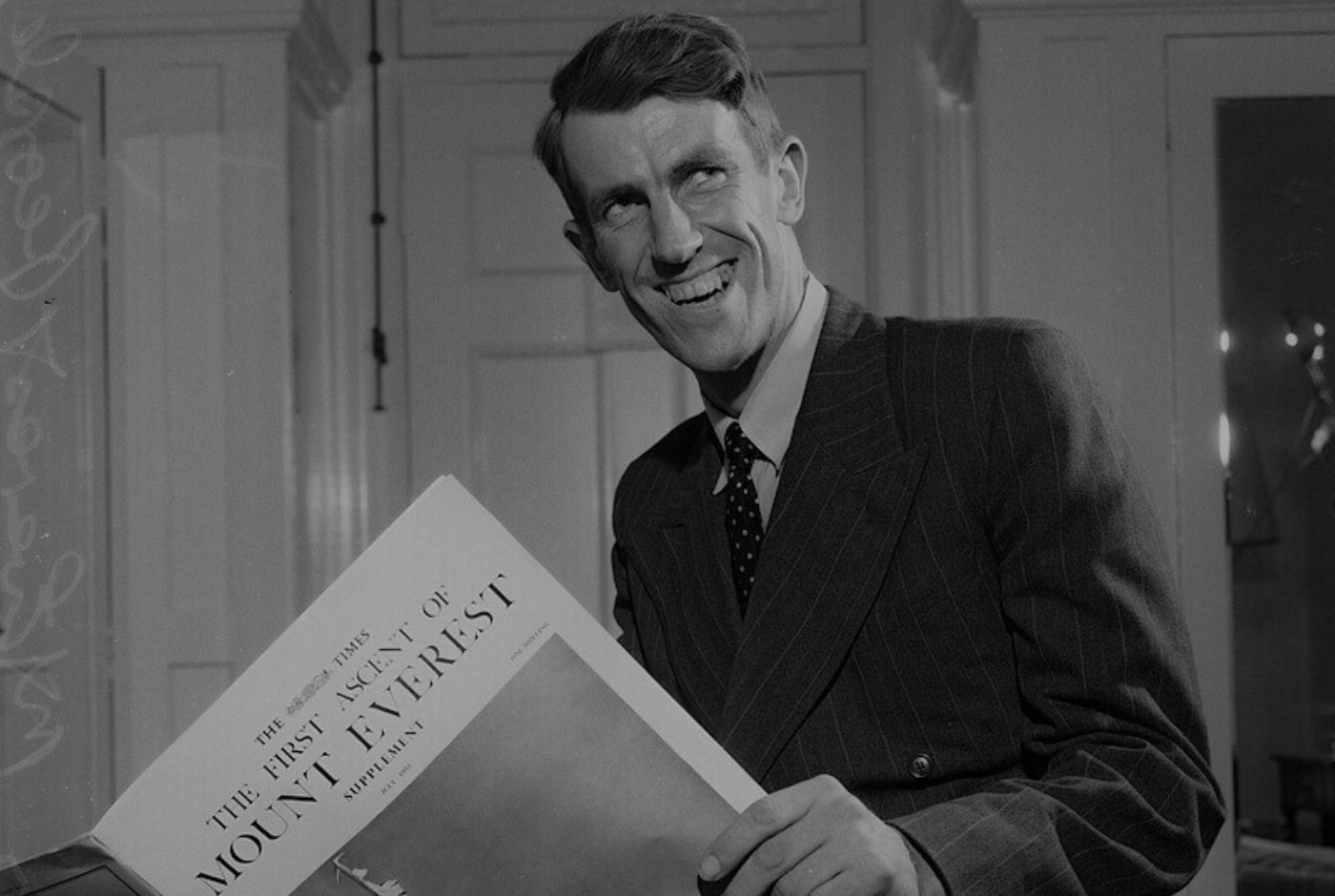
Sir Edmund Hillary’s name is forever linked with Mount Everest as one of the two men who first reached its summit. On May 29, 1953, alongside Tenzing Norgay Sherpa, Hillary successfully stood on the world’s highest point at 8,849 meters (29,032 feet). Their achievement came after decades of failed attempts by earlier expeditions, making it one of the greatest milestones in mountaineering history.
Hillary, a beekeeper from New Zealand, was known for his determination, humility, and respect for the mountains. After his successful climb, he became an international hero and was knighted by Queen Elizabeth II. Yet his legacy extends beyond Everest. He dedicated much of his life to the Sherpa people, helping build schools, hospitals, and airstrips in Nepal through the Himalayan Trust.
For climbers and adventurers worldwide, Edmund Hillary symbolizes courage, perseverance, and the spirit of exploration. His ascent of Everest, alongside Tenzing Norgay, not only conquered a mountain but also united cultures in a shared triumph.
Hillary & Everest Key Points Table
| Aspect | Details |
| Full Name | Sir Edmund Hillary (1919–2008). |
| Historic Achievement | First successful ascent of Everest on May 29, 1953. |
| Climbing Partner | Tenzing Norgay Sherpa. |
| Nationality | New Zealand. |
| Recognition | Knighted by Queen Elizabeth II after the climb. |
| Legacy | Founder of Himalayan Trust; built schools and hospitals in Nepal. |
| Symbolism | Represents courage, exploration, and human achievement at the highest level. |
Mount Everest and Mount Kanchenjunga
Mount Everest and Mount Kanchenjunga are the world’s tallest and third-highest peaks, yet their climbing reputations and cultural importance differ greatly. Mount Everest, at 8,849 meters (29,032 feet), is the highest mountain on Earth and remains the ultimate mountaineering prize. Kanchenjunga, rising to 8,586 meters (28,169 feet), straddles the Nepal–India (Sikkim) border and is deeply revered as a sacred peak. In fact, many climbers traditionally stop just short of its true summit out of cultural respect.
Mt Kanchenjunga and the Summit of Everest

Climbing experiences also contrast. Everest attracts thousands annually due to its fame, developed infrastructure, and commercial expeditions, despite the risks of altitude sickness, avalanches, and the Khumbu Icefall. Kanchenjunga, however, is attempted by far fewer climbers, mainly because of its remote location, technical climbing routes, and notoriously unpredictable weather. Steep ridges, frequent avalanches, and the absence of large-scale support systems make it one of the most dangerous 8,000-meter mountains.
Everest symbolizes global recognition, the “Roof of the World,” and human ambition, while Kanchenjunga embodies wilderness, sanctity, and cultural reverence. Together, they highlight two sides of Himalayan mountaineering—the accessible yet extreme challenge of Everest versus the remote, sacred, and formidable aura of Kanchenjunga.
Everest vs Kanchenjunga Comparison Table
| Factor | Mount Everest | Mount Kanchenjunga |
| Height | 8,849 m (29,032 ft). | 8,586 m (28,169 ft). |
| Global Rank | Highest mountain (No. 1). | Third highest mountain (No. 3). |
| Location | Nepal–Tibet border (Mahalangur Himal). | Nepal–India (Sikkim) border, Kanchenjunga Himal. |
| Climbing Difficulty | Very high altitude, long route, crowded but supported by infrastructure. | Remote, steep, avalanche-prone, technically harder. |
| Fatality Rate | Lower (3–4%). | Higher (20% historically). |
| Climbing Popularity | Thousands attempt each season. | Rarely attempted; for elite climbers. |
| Cultural Significance | Known as Sagarmatha (Nepal) and Chomolungma (Tibet). | Sacred in Sikkim and eastern Nepal; true summit traditionally avoided. |
| First Ascent | 1953 (Hillary & Norgay). | 1955 (Brown & Band). |
Mount Everest and Mount Annapurna
Mount Everest and Mount Annapurna both rise from Nepal’s Himalayas, yet they represent two very different mountaineering experiences. Mount Everest, at 8,849 meters (29,032 feet), is the highest mountain in the world and the ultimate goal for climbers seeking prestige. Supported by established routes, professional guides, and modern infrastructure, Everest attracts thousands each year despite its extreme altitude and notorious “death zone.”
Which is higher Mount Everest or Mount Annapurna?
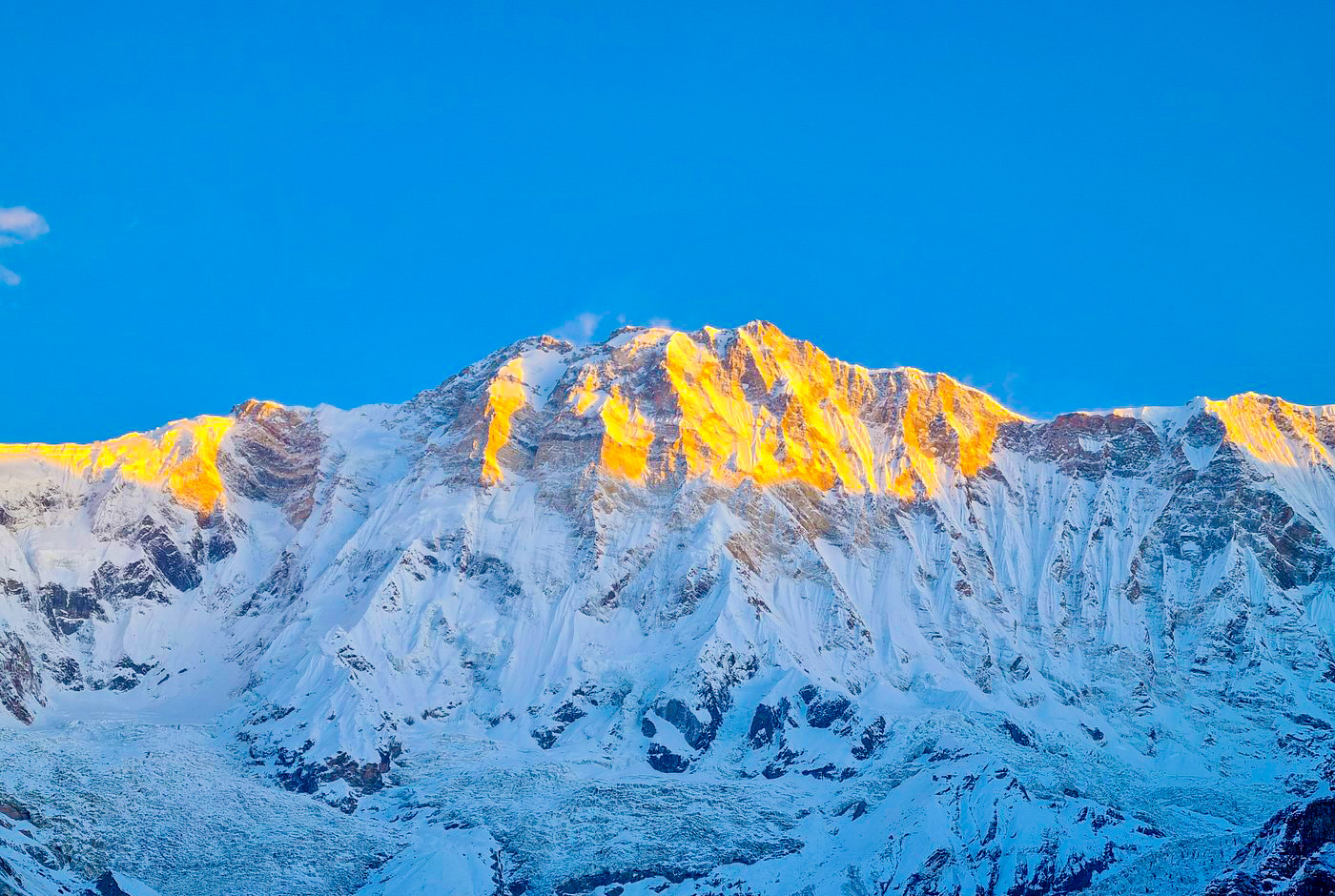
Annapurna I, standing at 8,091 meters (26,545 feet), is the tenth highest peak on Earth but has earned a reputation as the most dangerous of the 8,000-meter giants. With avalanches, steep terrain, and highly unpredictable weather, Annapurna has one of the highest fatality-to-summit ratios in mountaineering. Climbers often regard it as far more technical and risky compared to Everest, requiring precision, skill, and luck.
Culturally, both mountains carry deep spiritual meaning in Nepal. Everest is revered as Sagarmatha (Nepali) and Chomolungma (Tibetan), while Annapurna is honored as the goddess of nourishment and harvest. For adventurers, however, Everest stands as a test of endurance and ambition, while Annapurna is feared and respected as the ultimate trial of risk versus reward.
Everest vs Annapurna Comparison Table
| Factor | Mount Everest | Mount Annapurna I |
| Height | 8,849 m (29,032 ft). | 8,091 m (26,545 ft). |
| Global Rank | Tallest mountain in the world. | 10th highest mountain in the world. |
| Location | Nepal–Tibet border, Mahalangur Himal. | Central Nepal, Annapurna massif. |
| Climbing Difficulty | Extreme altitude, long duration, icefalls, avalanches. | Highly technical, avalanche-prone, unpredictable weather. |
| Fatality Rate | Lower (3–4%). | Among the highest (30–40%). |
| Climbing Popularity | Thousands attempt yearly with guided support. | Far fewer attempts due to extreme risk. |
| Symbolism | “Roof of the World,” prestige in summiting. | Ultimate test of danger and technical skill. |
| First Ascent | 1953 (Hillary & Norgay). | 1950 (Herzog & Lachenal). |
Mount Everest and Kilimanjaro
Mount Everest and Mount Kilimanjaro are two of the world’s most iconic peaks, yet they differ in geography, height, and climbing experience. Mount Everest, at 8,849 meters (29,032 feet), is the highest mountain in the world and part of the Himalayas on the Nepal–Tibet border. Mount Kilimanjaro, standing at 5,895 meters (19,341 feet), is the highest mountain in Africa, but significantly shorter than Everest.
Mount Everest vs Mount Kilimanjaro

The climbing experiences are also vastly different. Everest requires weeks of acclimatization, technical ice climbing, and survival at extreme altitude, with summit attempts often taking two months. Kilimanjaro is a non-technical trek that can be completed in 5–9 days by hikers with good fitness. While altitude sickness is still a risk, it does not involve the technical skills, dangerous crevasses, or high fatality rates associated with Everest.
Everest remains the pinnacle of mountaineering ambition, drawing elite climbers worldwide. Kilimanjaro, by contrast, symbolizes accessibility and adventure, offering trekkers the chance to stand on Africa’s “Roof of the Continent” without technical climbing experience. Together, they represent two different pathways into the world of high-altitude exploration.
Everest vs Kilimanjaro Comparison Table
| Factor | Mount Everest | Mount Kilimanjaro |
| Height | 8,849 m (29,032 ft) tallest mountain on Earth. | 5,895 m (19,341 ft) tallest mountain in Africa. |
| Location | Himalayas, Nepal–Tibet border. | Tanzania, East Africa. |
| Mountain Type | Fold mountain, formed by tectonic collision. | Dormant stratovolcano, with three volcanic cones. |
| Climb Duration | 6–8 weeks, including acclimatization. | 5–9 days depending on route. |
| Technical Difficulty | Requires advanced mountaineering, ice and rock climbing, and oxygen use. | Non-technical trekking; walking routes to summit. |
| Altitude Risks | Extreme altitude, “death zone” above 8,000 m. | Risk of altitude sickness, but manageable with pacing. |
| Popularity | Thousands of climbers attempt each year with heavy logistics. | One of the most climbed high mountains in the world. |
| Symbolism | Represents the ultimate mountaineering challenge. | Known as “The Roof of Africa,” accessible adventure peak. |
Mount Everest and Mount Kailash
Mount Everest and Mount Kailash are two remarkable Himalayan peaks, yet their significance could not be more different. Mount Everest, at 8,849 meters (29,032 feet), is the highest mountain in the world, attracting climbers from every corner of the globe. Mount Kailash, rising to 6,638 meters (21,778 feet), is far lower in elevation but is revered as one of the most sacred mountains in Hinduism, Buddhism, Jainism, and Bon traditions.
Kailash Parbat and Mount Everest
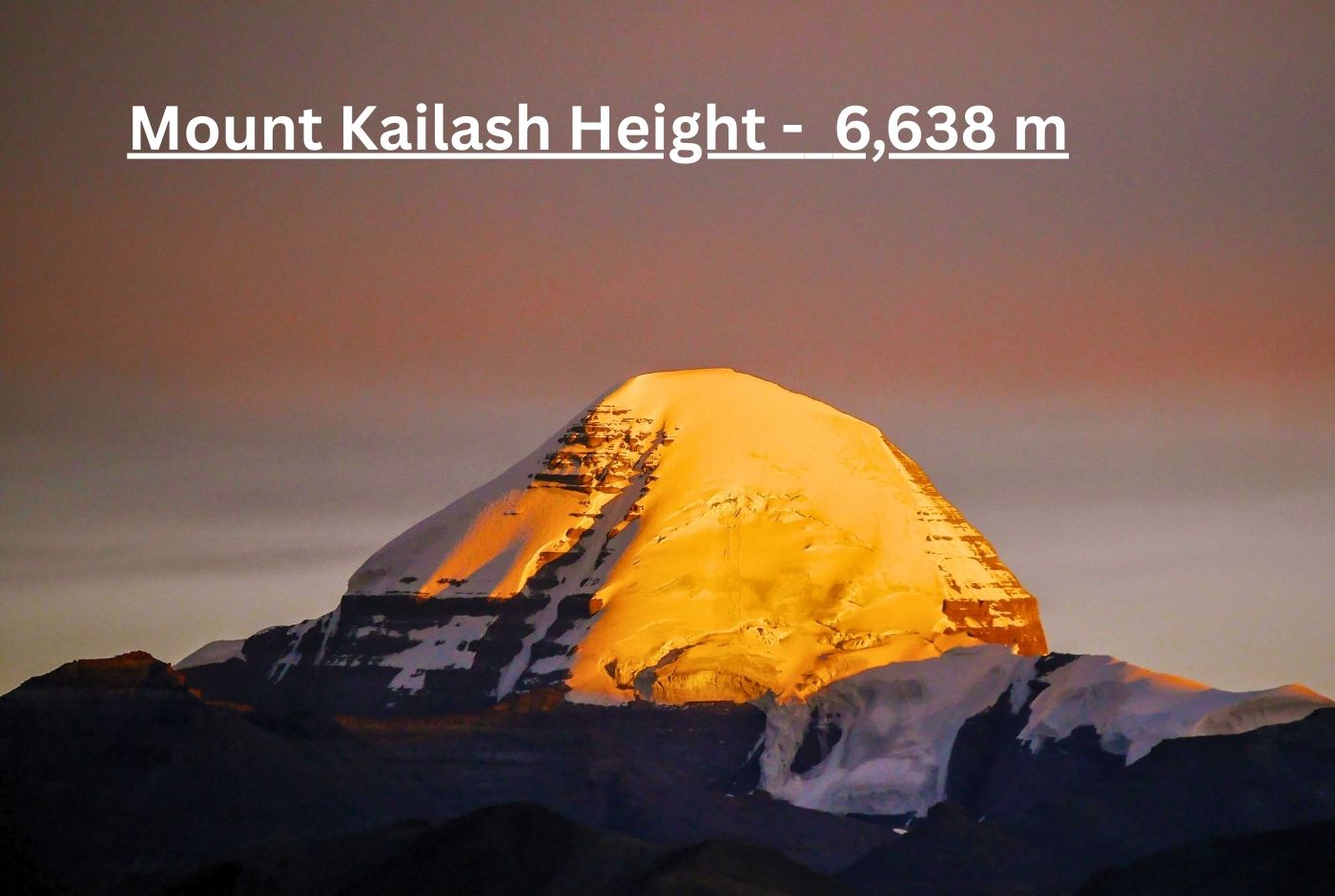
Everest represents the ultimate mountaineering challenge, requiring weeks of acclimatization, technical climbing, and survival in the “death zone.” By contrast, no one has ever summited Mount Kailash, as the peak is considered too holy to climb. Local traditions strictly forbid expeditions to its summit. Instead, pilgrims perform the Kailash Kora, a 52-kilometer circumambulation around the mountain, believed to purify sins and bring spiritual blessings.
While Everest embodies physical conquest and adventure, Kailash symbolizes spiritual transcendence, attracting thousands of pilgrims annually. Together, they highlight the dual nature of the Himalayas—one as a stage for human achievement, the other as a center of timeless spiritual devotion.
Everest vs Kailash Comparison Table
| Factor | Mount Everest | Mount Kailash |
| Height | 8,849 m (29,032 ft) highest peak in the world. | 6,638 m (21,778 ft) sacred Himalayan peak. |
| Location | Nepal–Tibet border, Mahalangur Himal. | Tibet Autonomous Region, near sources of major rivers. |
| Climbing Status | Popular for expeditions; thousands attempt annually. | No climbs permitted; considered sacred and unclimbable. |
| Cultural Significance | Symbol of global mountaineering ambition. | Revered in Hinduism, Buddhism, Jainism, and Bon. |
| Trekking/Access | Requires permits, Sherpa support, weeks of preparation. | Pilgrims trek the Kora (52 km circuit) instead of climbing. |
| Tourism Focus | Adventure and mountaineering tourism. | Religious and spiritual pilgrimage. |
| Symbolism | Represents human endurance and ambition. | Embodies spirituality, purity, and divine connection. |
Sherpas and Mount Everest

Sherpas and Mount Everest are inseparable in the story of Himalayan mountaineering. The Sherpas, an ethnic group from Nepal’s high Himalayas, are renowned for their endurance, strength, and intimate knowledge of the mountains. Their homeland lies in the Khumbu region near Everest, where they have lived for centuries at high altitude, developing unique resilience to thin air.
When expeditions to climb Mount Everest began in the early 20th century, Sherpas became indispensable. They guide climbers, fix ropes across dangerous sections like the Khumbu Icefall, establish high-altitude camps, and carry heavy supplies. The legendary Sherpa Tenzing Norgay, who reached Everest’s summit with Sir Edmund Hillary in 1953, cemented their role in mountaineering history.
Today, Sherpas remain the backbone of every Everest expedition. While climbers seek glory at the world’s highest peak, it is often the Sherpas who make those successes possible. Their contributions embody courage, cultural pride, and a spiritual bond with Mount Everest, making them heroes of the Himalayas.
Sherpas & Everest Key Points Table
| Aspect | Details |
| Who are the Sherpas? | Indigenous people of the Khumbu region in Nepal. |
| Role on Everest | Guides, porters, rope fixers, rescue specialists. |
| Fame | Tenzing Norgay, first to summit Everest with Hillary in 1953. |
| Skills | Exceptional endurance at high altitude, deep mountain knowledge. |
| Modern Role | Essential to all expeditions—handling logistics, safety, and success. |
| Cultural Connection | Everest (Sagarmatha) is spiritually significant to Sherpa traditions. |
Mount Everest and the Mariana Trench
Mount Everest and the Mariana Trench represent the two greatest extremes of Earth’s elevation. Mount Everest, rising 8,849 meters (29,032 feet) above sea level, is the highest mountain in the world, standing proudly in the Himalayas on the Nepal–Tibet border. The Mariana Trench, located in the Pacific Ocean, plunges to about 10,935 meters (35,876 feet) at Challenger Deep, making it the deepest known point on Earth.
Everest symbolizes human endurance and ambition, drawing climbers who dream of reaching its icy summit. By contrast, the Mariana Trench remains largely unexplored, where crushing pressure, freezing temperatures, and total darkness challenge even the most advanced submersibles. Thousands of climbers have stood atop Everest, but only a handful of manned expeditions have reached the trench’s depths.
Together, Everest and the Mariana Trench define the planet’s vertical extremes—Everest as the roof of the world and the Mariana Trench as its deepest abyss. Their difference showcases Earth’s dramatic contrasts, from towering Himalayan peaks to hidden oceanic trenches.
Everest vs Mariana Trench Comparison Table
| Factor | Mount Everest | Mariana Trench |
| Type | Mountain (highest point on Earth). | Oceanic trench (deepest point on Earth). |
| Height/Depth | 8,849 m (29,032 ft) above sea level. | 10,935 m (35,876 ft) below sea level. |
| Location | Nepal–Tibet border, Himalayas. | Western Pacific Ocean, east of the Philippines. |
| Discovery/Exploration | First summited in 1953 (Hillary & Norgay). | First manned descent in 1960 (Trieste submersible). |
| Challenges | Altitude sickness, avalanches, extreme cold, low oxygen. | Crushing pressure, darkness, inaccessibility, limited technology. |
| Human Attempts | Thousands of successful summits. | Only a handful of manned descents. |
| Symbolism | Represents the “Roof of the World.” | Represents the deepest abyss on Earth. |
Mount Everest and Mauna Kea
Mount Everest and Mauna Kea both hold claims to being the world’s greatest mountains, but by different definitions. Mount Everest, at 8,849 meters (29,032 feet) above sea level, is officially the highest mountain in the world. In contrast, Mauna Kea, a dormant volcano in Hawaii, rises about 10,210 meters (33,500 feet) from its base on the Pacific Ocean floor, making it the tallest mountain on Earth by total height. However, only 4,205 meters (13,796 feet) of Mauna Kea stand above sea level.
The climbing experience also sets them apart. Everest demands technical mountaineering skills, weeks of acclimatization, and survival in extreme conditions, making it a test of endurance and ambition. Mauna Kea, though high, is accessible by road and short hikes, with the main challenges being altitude sickness and its volcanic landscape.
Everest symbolizes ultimate human achievement, while Mauna Kea blends culture, science, and geography, housing world-renowned observatories and remaining sacred to Native Hawaiians. Together, they redefine the meaning of “highest” versus “tallest” mountains on Earth.
Everest vs Mauna Kea Comparison Table
| Factor | Mount Everest | Mauna Kea |
| Height Above Sea Level | 8,849 m (29,032 ft). | 4,205 m (13,796 ft). |
| Total Height (Base to Summit) | 8,849 m (above sea level only). | 10,210 m (33,500 ft) from base on ocean floor. |
| Location | Nepal–Tibet border, Himalayas. | Big Island, Hawaii, USA. |
| Mountain Type | A fold mountain formed by tectonic collision. | Dormant shield volcano. |
| Climbing Difficulty | Requires technical mountaineering and weeks of acclimatization. | Accessible by road/trek; altitude sickness possible. |
| First Ascent | 1953 by Hillary & Norgay. | Not typically “climbed” in a mountaineering sense. |
| Cultural Significance | Revered as Sagarmatha/Chomolungma. | Sacred in Hawaiian culture; home to observatories. |
| Symbolism | Highest mountain above sea level. | Tallest mountain from base to summit. |
Mount Everest and Mauna Loa
Mount Everest and Mauna Loa are two of Earth’s most iconic mountains, but they dominate in very different ways. Mount Everest, at 8,849 meters (29,032 feet) above sea level, is the highest mountain in the world and a legendary mountaineering goal. In contrast, Mauna Loa, a massive shield volcano in Hawaii, is the largest mountain on Earth by volume, spanning over 5,271 square kilometers (13,681 sq mi). Rising nearly 9,144 meters (30,000 feet) from its oceanic base, it dwarfs Everest in bulk, though above sea level it reaches just 4,169 meters (13,681 feet).
Climbing experiences differ dramatically. Everest requires weeks of acclimatization, technical mountaineering skills, and oxygen support to survive extreme altitude. Mauna Loa is more accessible, with treks to its summit achievable in days, though climbers face volcanic terrain, unpredictable weather, and the risks of an active volcano.
Everest remains the “Roof of the World,” symbolizing human endurance and ambition, while Mauna Loa embodies geological power and scale. Together, they illustrate the multiple ways mountains can dominate—through height, mass, and natural force.
Everest vs Mauna Loa Comparison Table
| Factor | Mount Everest | Mauna Loa |
| Height Above Sea Level | 8,849 m (29,032 ft). | 4,169 m (13,681 ft). |
| Total Height (Base to Summit) | 8,849 m. | 9,144 m (30,000 ft) from ocean floor base. |
| Location | Nepal–Tibet border, Himalayas. | Big Island, Hawaii, USA. |
| Mountain Type | Fold mountain (tectonic collision). | Shield volcano (largest by volume). |
| Size/Volume | N/A (not measured by volume). | 5,271 sq km (13,681 sq mi) — world’s largest mountain by volume. |
| Climbing Difficulty | Extremely technical, requires acclimatization, gear, Sherpa support. | Moderate trekking with volcanic terrain challenges. |
| Risk Factors | Avalanches, altitude sickness, extreme cold, icefalls. | Volcanic activity, lava flows, weather shifts. |
| Symbolism | World’s highest point. | World’s largest mountain by volume. |
Mount Everest and Olympus Mons
Mount Everest and Olympus Mons showcase two extremes—Earth’s tallest mountain versus the tallest volcano in the solar system. Mount Everest, at 8,849 meters (29,032 feet) above sea level, is the highest mountain on Earth and an enduring symbol of human adventure. By comparison, Olympus Mons on Mars rises about 21,900 meters (72,000 feet), nearly three times the height of Everest, making it the largest volcano known to science.
The climbing experience differs entirely. Everest tests human endurance with avalanches, thin air, and subzero storms, drawing thousands of climbers and trekkers each year. Olympus Mons has never been climbed, as it belongs to Mars, where its massive size results from billions of years of volcanic activity without tectonic plate movement to restrict its growth.
Everest embodies human ambition and survival on Earth, while Olympus Mons highlights planetary geology and extraterrestrial extremes. Together, they redefine our understanding of the word “tallest,” showing how mountains dominate on different worlds.
Everest and the Olympus Mons Comparison Table
| Factor | Mount Everest | Olympus Mons |
| Height | 8,849 m (29,032 ft). | 21,900 m (72,000 ft). |
| Location | Nepal–Tibet border, Himalayas (Earth). | Tharsis volcanic plateau, Mars. |
| Type | Fold mountain (tectonic collision). | Shield volcano (largest in solar system). |
| Base Size | 60 km wide. | 600 km wide (about the size of France). |
| Climbing | Demands technical skills, oxygen, weeks of acclimatization. | Not climbed; only studied remotely by space missions. |
| Risks | Avalanches, altitude sickness, extreme cold. | Martian conditions: thin atmosphere, no oxygen, freezing temperatures. |
| Symbolism | “Roof of the World,” pinnacle of human adventure. | Example of planetary geology and scale beyond Earth. |
Mount Everest and Burj Khalifa

Mount Everest and the Burj Khalifa represent two different pinnacles of height—one natural, the other man-made. Mount Everest, standing at 8,849 meters (29,032 feet), is the tallest mountain on Earth, formed by tectonic forces millions of years ago. The Burj Khalifa, in Dubai, UAE, rises to 828 meters (2,717 feet), making it the tallest building in the world and a modern marvel of human engineering.
The contrast between them is striking. Climbing Everest requires extreme endurance, weeks of acclimatization, and survival in the death zone, while reaching the top of the Burj Khalifa is as simple as stepping into an elevator. To match Everest’s height, you would need to stack nearly 11 Burj Khalifas on top of each other.
Everest embodies natural grandeur, spiritual meaning, and mountaineering ambition, while the Burj Khalifa stands as a symbol of architectural innovation, wealth, and modern ambition. Together, they highlight the scale of what Earth creates versus what humanity can build—icons in their own distinct realms.
Everest vs Burj Khalifa Comparison Table
| Factor | Mount Everest | Burj Khalifa |
| Height | 8,849 m (29,032 ft). | 828 m (2,717 ft). |
| Location | Nepal–Tibet border, Himalayas. | Dubai, United Arab Emirates. |
| Formation/Construction | Formed naturally by tectonic collision. | Built by human engineering (completed 2010). |
| Type | Fold mountain. | Skyscraper. |
| Climbing/Access | Demands weeks of acclimatization, oxygen, survival gear. | Elevator access to viewing decks. |
| Symbolism | Natural world’s highest point, spiritual and adventurous. | Tallest man-made structure, symbol of progress. |
| Comparison | Nearly 11 Burj Khalifas stacked equal Everest’s height. | One structure versus the Earth’s tallest peak. |
Is Mount Everest also known as Nepal Himalaya?
No, Mount Everest is not known as the "Nepal Himalaya"; Mount Everest is the world's highest peak, while the Himalayas (or Himalaya) is a vast mountain range that runs through Nepal and several other countries. Mount Everest is located within a section of the Himalayas called the Mahalangur Himal sub-range, and in Nepal, it is specifically known by the local name Sagarmatha.
Is Mount Everest in two countries?
Yes, Mount Everest is located on the border of two countries: Nepal and China (specifically, the Tibet Autonomous Region). The summit of the mountain sits directly on this international border, with the southern slopes within Nepal and the northern slopes within China's Tibet.
Which country and continent is Mt Everest in?
Mount Everest is in Asia, straddling the border between Nepal and China (Tibet Autonomous Region). It is located within the Mahalangur Himal sub-range of the Himalayas.
Conclusion: Mount Everest and Its Enduring Legacy
Mount Everest stands as a testament to natural wonder and human ambition. As the world continues to admire, challenge, and study the highest point on Earth, the need to preserve and respect this extraordinary landscape grows ever more urgent. Mount Everest and the rich world around it will undoubtedly continue to inspire future generations to reach beyond their limits, while reminding humanity of the fragile beauty of our planet.



Post a Comment